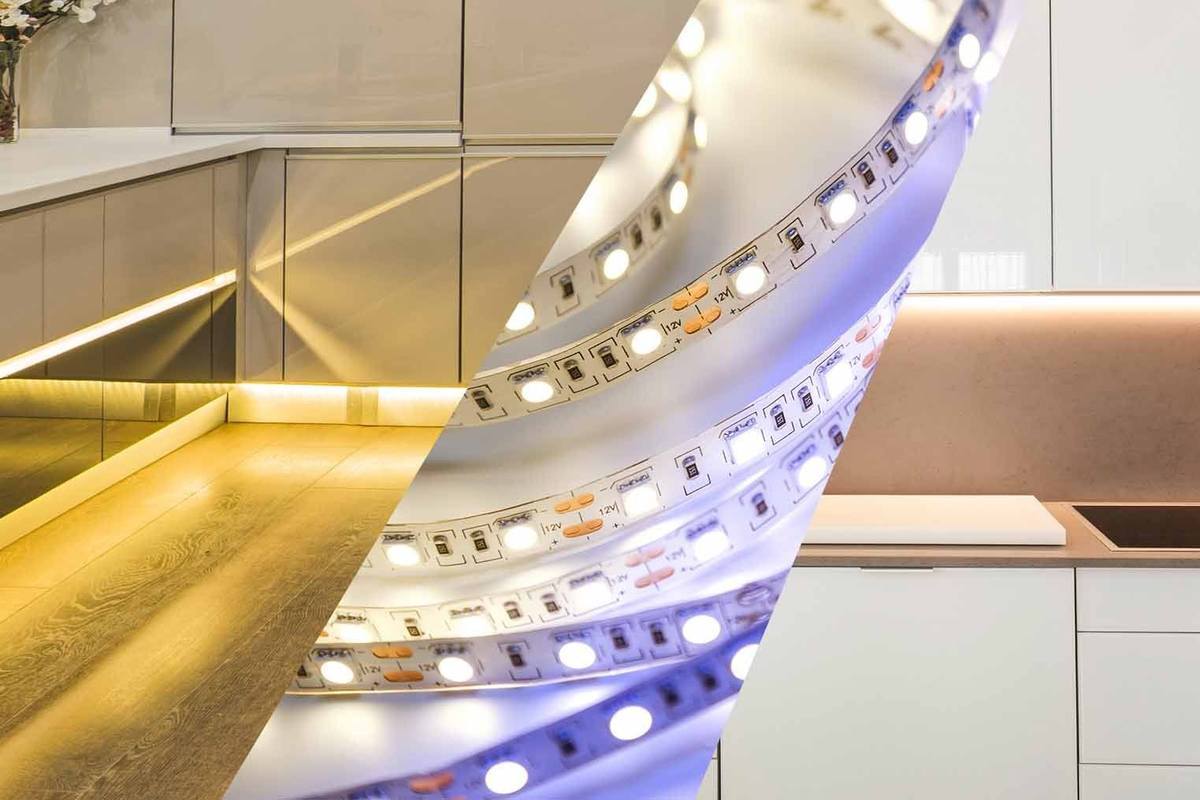In our new series of LED installation tips, we’ll touch on both well known and less well known installation tips, helping you make sure that your installation will be the best that it can be. Today’s post, the first in this series, discusses one of our most common suggestions : You should never see the LED strip
Reasons you shouldn’t see your LED strips
LED light strips are uglyThere, we said it. An LED strip is not pretty - it’s an industrial looking piece of plastic, metal, and electrical components. This isn’t particularly a problem. Our strips are designed to put out light, not look good (though trust us, we’ve tried). And while the light out strips put out is very nice, seeing the actual LEDs putting out that light can be a little jarring. When the LEDs are exposed directly, the light can be overpowering, washing out everything else you see and leaving hundreds of little dots in your vision when you close your eyes.
Angles matter
LEDs are directional. This means that they put out light in a certain direction (like a flashlight), not all around (like a light bulb). They have what is called a ‘beam angle’, which is the effective range (in degrees) that the led chips emit light. Beyond this range, their output decreases rapidly, and they can have minor variations in colour temperature. This means that when the strips are viewed from the very edge of their beam angle, they can appear to be of varying levels of brightness and colour - which is at best unattractive, and at worst, totally unworkable.
They’re small
LED chips are small. How small? It’s actually in the name - a 5050 LED chip is 5.0 millimeters by 5.0 millimetres and a 2835 is 2.8 millimetres by 3.5 millimetres. Even our largest strips containing RGBW chips are barely half an inch wide. When your lighting source comes in such a small package, it’s almost a waste to install it
Hiding in plain sight
Let’s take a quick look at two different types of lighting - direct and indirect. Direct lighting, as you might imagine, involves a light source, placed prominently in a space, supplying light directly into that space. Think of a light bulb hanging from the ceiling. The light from that bulb directly illuminates all objects in the room, hence the name. The majority of lighting is direct lighting.Indirect lighting is different. Indirect lighting focuses the light from the light source onto one or more reflective surfaces, which then provide illumination. Good examples of this are lighting installed into crown molding, or above kitchen cabinets, which reflect the light off the walls and the ceiling to provide illumination.
Direct lighting
If your project requires direct lighting - such as on the bottom of a kitchen cabinet, then our suggestion is to make sure it can’t be seen from eye level. Many cabinets have a small lip that you can hide the strips behind, or you can use our aluminum mounting channels, which will also keep them protected.
Indirect lighting
If your project utilizes indirect lighting, then you’re probably in luck, and your LED strips are probably hidden from view already (though you might want to make sure that they remain hidden from all angles around the room).
There are exceptions to any rule - including this one. Be sure to use good judgement, and if you're not sure be sure to test, test, and test again before making something permanent!
HitLights is a LED lighting partner - not just a vendor. To help your lighting projects be betterwe created this free eBook, titled 'How to Choose LED Strip Lights' is an ideal guide in the next stage of your LED lighting journey.


